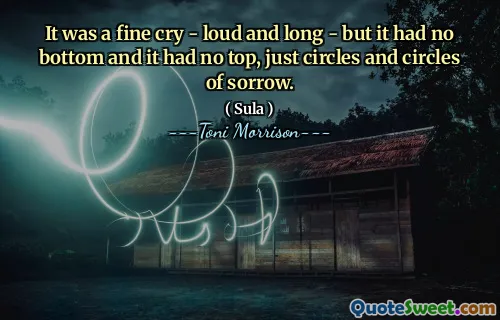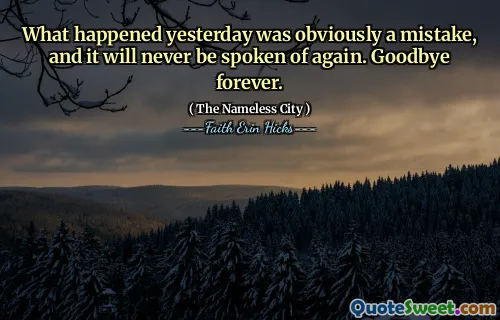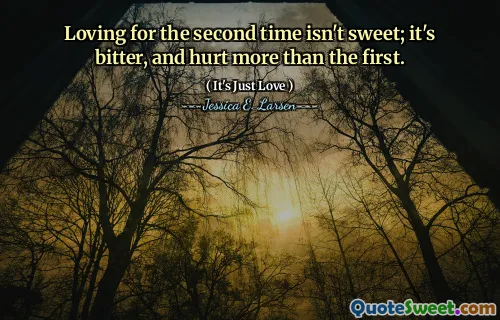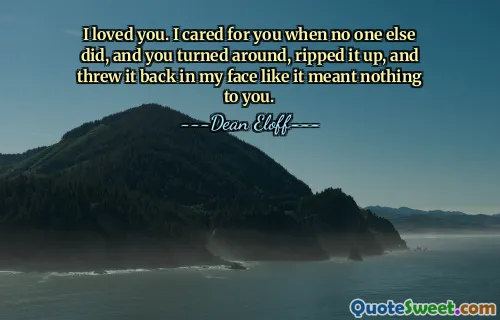
It was a fine cry - loud and long - but it had no bottom and it had no top, just circles and circles of sorrow.
This evocative quote from Toni Morrison's Sula captures the profound, unending nature of sorrow in a visceral way. The imagery of a cry that is "loud and long" yet lacking both "bottom" and "top" suggests an emotional experience that is infinite and cyclical, as represented by "circles and circles of sorrow." This metaphor eloquently conveys the complexity of grief and pain — it is not linear and does not have a clear beginning or end. Instead, sorrow encompasses a continuous emotional loop, reflecting the pervasive and enduring nature of human suffering.
Morrison's language here invokes a sense of overwhelming helplessness and resignation, where sorrow cannot be escaped but only endured, much like the echo of a cry that repeats endlessly. This suggests that certain kinds of pain are so deeply ingrained that they transcend time and space, becoming an intrinsic part of our existence. This melancholic depiction also touches on the communal and cyclical aspects of suffering, implying how sorrow can permeate not just an individual but generations or communities, an important theme in Morrison's works.
Overall, the quote resonates on both a personal and universal level, exploring how sorrow shapes human life. It challenges the reader to reflect on the depth of emotional experiences beyond surface expressions of sadness, inviting empathy and contemplation about the enduring impact of grief and the human capacity to endure it.






